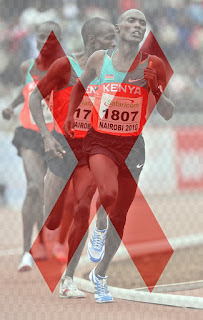For most of us, the answer will be no to all of these questions. Kenyan runners that run professionally and even semi-professionally train upwards of 140 miles per week and spend a lot of energy training so they can get by eating a lot of refined sugar, often drinking soda after training. If you do the same but only train twice or thrice a week, you will most likely be overweight even though you are exercising. Even western elites eat a lot of carbohydrates because they burn them off during their training.
My advice is to shift your diet a bit and eat more fats and proteins than carbs. You will also need to eat a lot of fiber. If you eat a lot of carbs, you will constantly be hungry and will need to eat every couple of hours or be hungry. By eating fats (healthy fats, that is), you will teach your body to use fat as fuel and you will have a toned body in no time. For most people it will take 4 to 6 months, for others, it might take a bit longer.
So stop eating like a Kenyan elite because you are not Kenyan and not elite! :)



